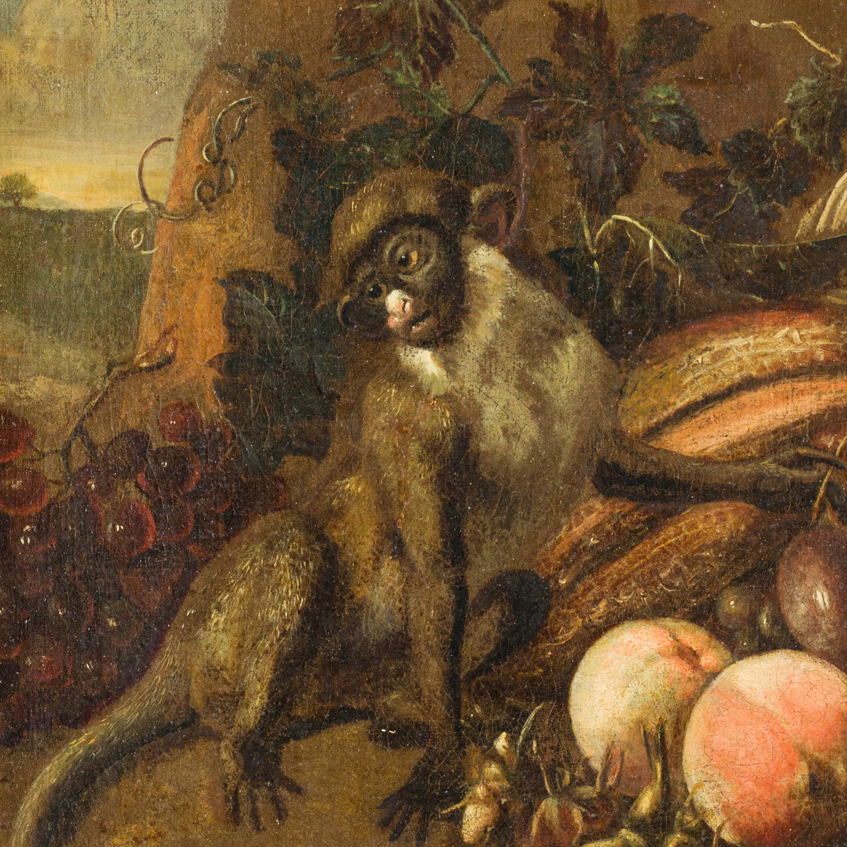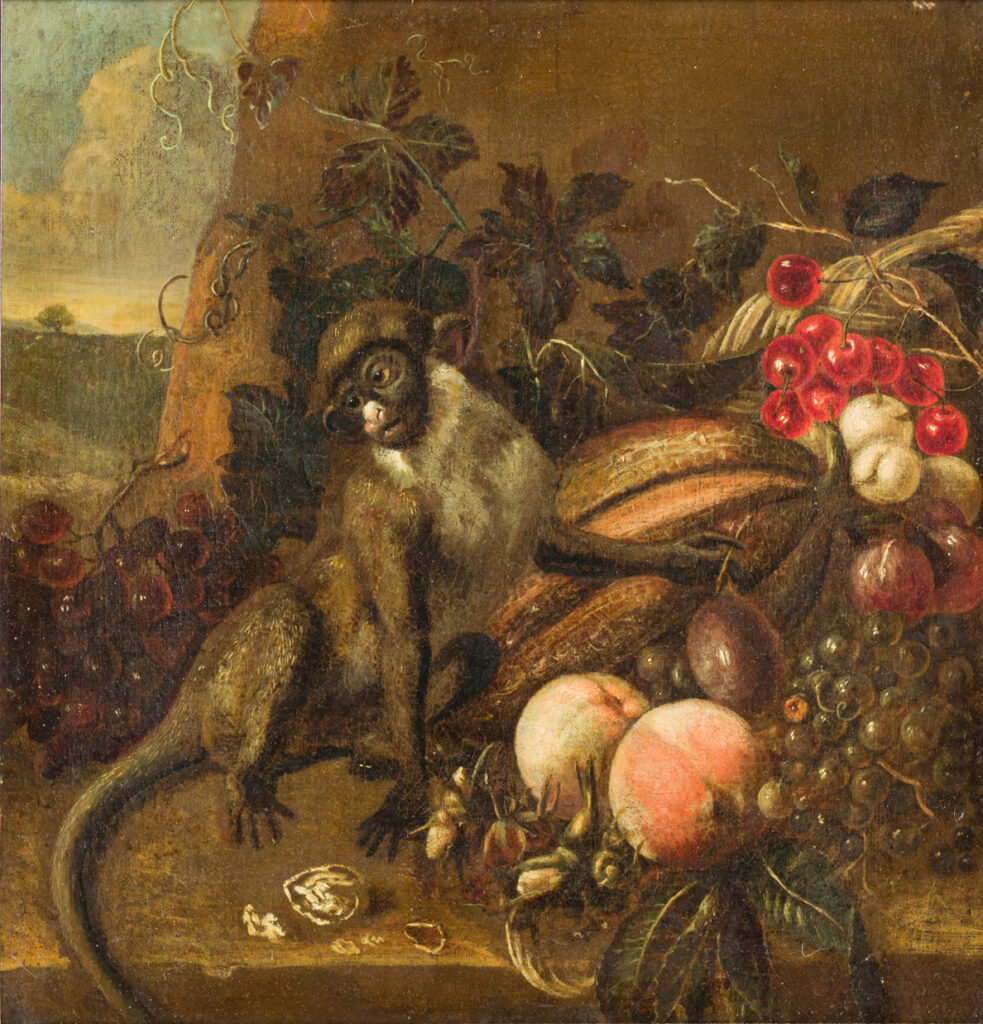The monkey in a still life painting is an allegorical reminder that art copies reality. In general, however, the monkey is the embodiment of sexual unrest for Christians and fertility for Hindu culture, as well as an alchemical symbol of transformation and transmutation, dialoguing between the higher and lower states of consciousness according to the dynamics of conjunction. In Greek myth, it is the primordial, irrational force identified with Dionysus, the symbol of rebirth through pain. In Christian iconography, when the monkey is associated with the Virgin Mary, it represents the lie over which truth has triumphed, while in Egyptian tradition it is identified with wisdom. Associated with still life, the monkey is intended to represent the thin line between the true and the plausible, between life and death, between good and evil.
This moralising theme was very fashionable in 17th century Flemish painting and is taken up by the painting attributed to Melchior de Hondecoeter (Utrecht 1636 – Amsterdam 1695) that will be featured in the web-only auction of Old Masters and 19th century paintings open until 10 May (lot 91, estimated value €2,000 – €3,000). A multifaceted and talented artist, the most famous of a family of artists, he specialised in the still life genre with animals, but also hunting scenes in natural settings such as forests and landscapes. He is famous for a series of over 50 paintings of birds that he executed for the Château de Driemond, commissioned by Adolphe Visscher.


